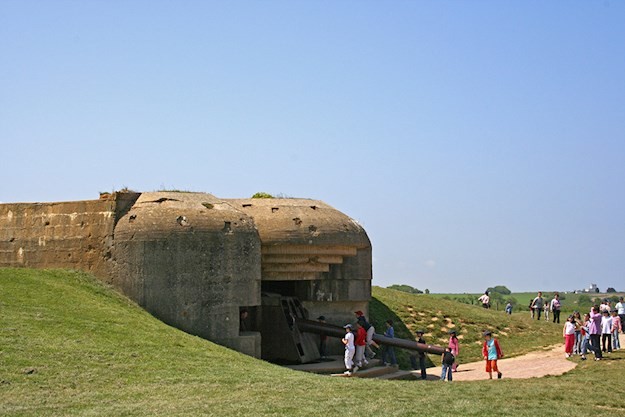From June 1940 the Germans, wishing to invade Great Britain, contented themselves with coastal defences between Calais and Boulogne. However, from December 1941 they adopted an exclusively defensive strategy, perceiving the danger emerging from the West.
The construction of the Atlantic Wall began in March 1942 around the major ports and in the French region of Nord-Pas-De-Calais with the building of submarine bases, batteries, garrison bunkers and radar stations. Marshal Von Rundstedt, commanding the western German ground forces, had to defend almost 5,000 km of coast. The target of 15,000 concrete structures, including 10,000 between the rivers Scheldt (Escaut in French) and Loire, was far from being completed and by the end of 1943 only 8,000 structures had seen the light of day.
In January 1944, Rommel was tasked with inspecting the Wall along the French coast and quickly discovered the system's faults. In just a few months he had more than 4,000 structures and 500,000 assorted obstacles built on the beaches and in the interior zones. The work was carried out under the auspices of the Todt Organisation, but was of unequal quality; the submarine bases were the best fortified. Before June 1944, 2,000 structures, 200,000 obstacles and 2 million mines were installed along the beaches and inland Normandy. On the eve of D-Day 23 German batteries were operational, even if some were not entirely completed. Among these, the batteries of Saint-Marcouf, La Pointe du Hoc, Longues-sur-mer and Merville presented real obstacles to the Allied forces.
